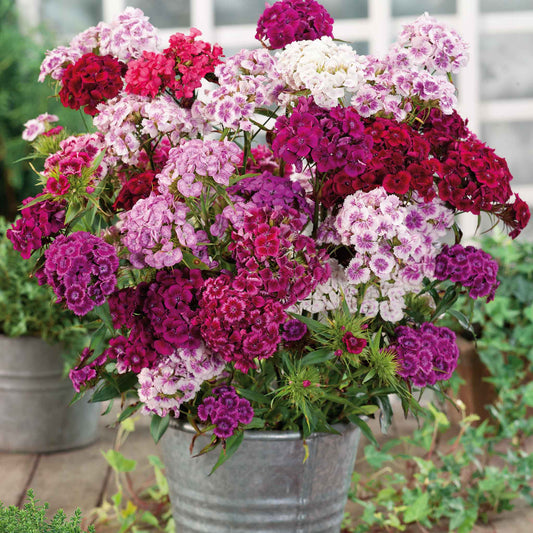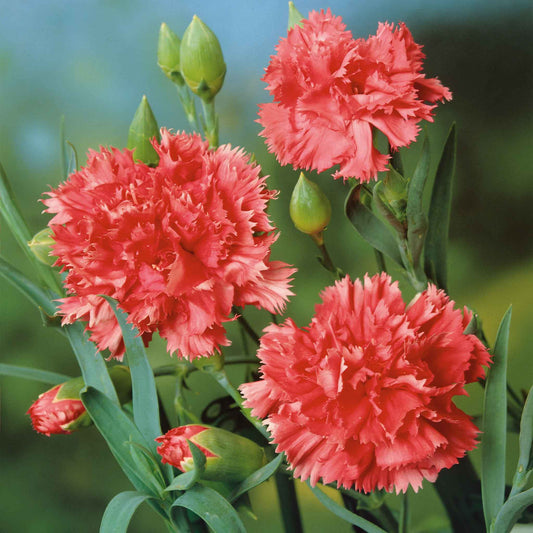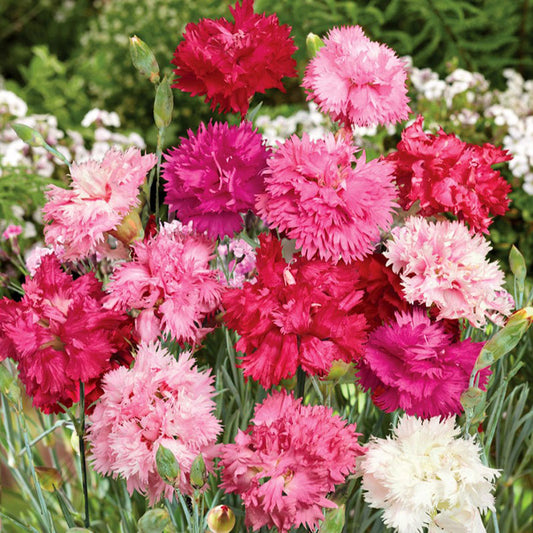-
main-collection-product-grid

Sweet William Seeds - Herald of Spring Mix
This blend of early bloomers are the first sign of springSweet William Seeds - Herald of Spring Mix
This blend of early bloomers are the first sign of springRegular price As Low As $4.99Regular priceUnit price per -
main-collection-product-grid

Carnation Seeds - Orange Sherbet
These orange blooms are edible, but they don't taste citrusyCarnation Seeds - Orange Sherbet
These orange blooms are edible, but they don't taste citrusyRegular price As Low As $5.99Regular priceUnit price per -
main-collection-product-grid

Sweet William Seeds - Albus
Snow-white, fragrant florets are long-lasting in the vaseSweet William Seeds - Albus
Snow-white, fragrant florets are long-lasting in the vaseRegular price As Low As $4.99Regular priceUnit price per -
main-collection-product-grid

Cottage Pink Seeds - Sonata
Excellent container flowerCottage Pink Seeds - Sonata
Excellent container flowerRegular price $8.99Regular priceUnit price per
Growing dianthus in your garden
- 20 dianthus seed varieties
- Easy to grow with beautiful results
- Comes in a variety of colors and blooms
- Prefers full sun exposure
A few facts about dianthus
Like so many flowers, the name dianthus has roots in the Greek language. From the Greek words dios "of Zeus" and anthos "flower," the dianthus has quite a reputation to live up to. Rumor is that the color pink may be named after the flower, coming from the perforated edges of the blooms. Pinking dates back to the 14th century when it was used as as a verb to describe decorating with a punched or perforated pattern. Looking at the edges of a dianthus, it is easy to see the connection. It does look at though nature decided to take pinking shears to this particular species.
Is dianthus and carnation the same flower?
Many species of dianthus have a wonderfully fragrant aroma that only enhances their beauty. Most are native to Europe and Asia, with a few being indigenous to North Africa. There is even one alpine species that is native to the arctic regions of North America. Sweet William and carnations are well known dianthus flowers and have long been a favorite way to fill cottage gardens and rockeries. Carnations, in particular, have been made exceptionally popular for their frequent and widespread use in cut flower arrangements for Valentine's Day, birthdays, and many other special occasions.
Most dianthus are perennials, though there are some that are annual or biennial. The flowers are most frequently pink in color with the frilled, pinked edges that gave them their name. The planting instructions for the different varieties can vary, so be sure to check directions on each planting guide. That said, almost all varieties like a full sun location (at least six hours of sun a day). Another important thing to consider when planting dianthus is adequate air circulation.
Optimal Soil Conditions for Dianthus
Soil should be rich and well-draining. Consider adding two to four inches of compost to help keep the soil nutrient rich. Seeds are best started indoors up to eight weeks before you are ready to transplant outdoors. For protection in the cold winter months, it's good practice to add a four-inch layer of mulch after the first hard frost, removing it in the spring once new growth begins.
For more information about growing, planting, and caring for dianthus, see the Dianthus Seeds Planting Guide.



